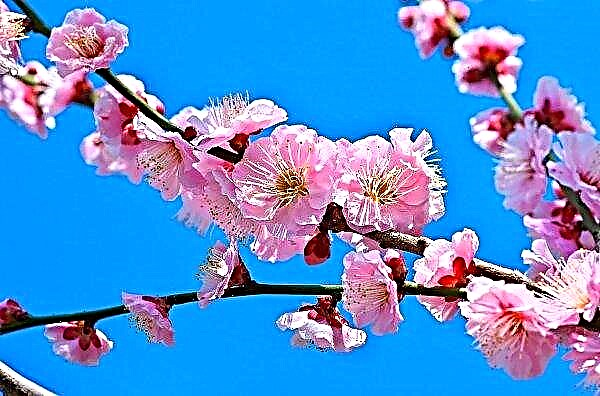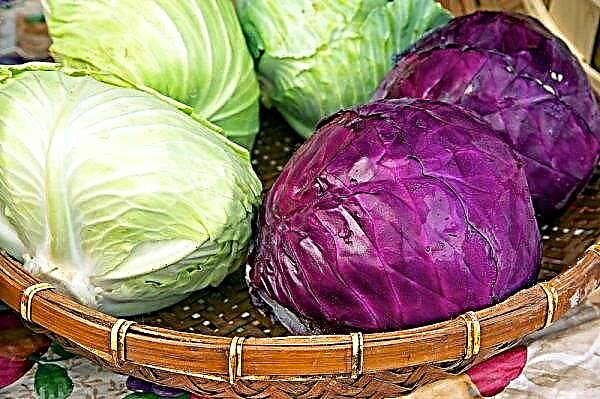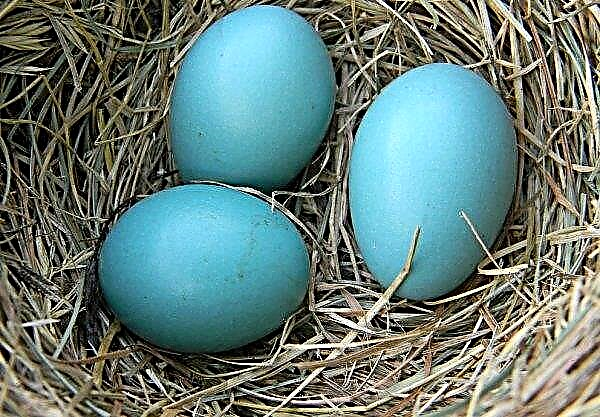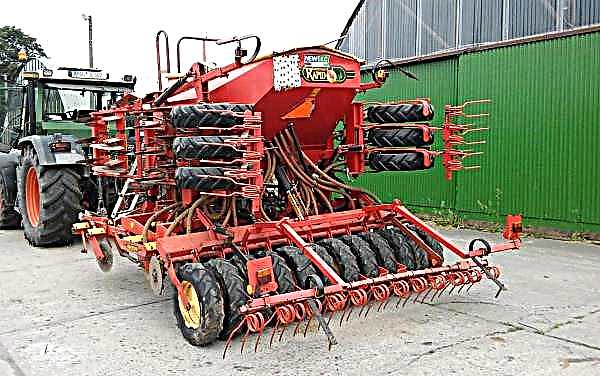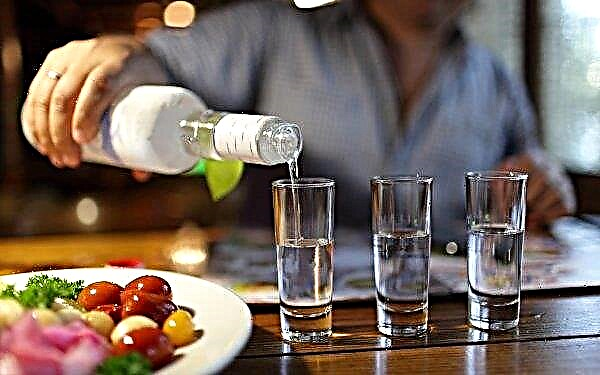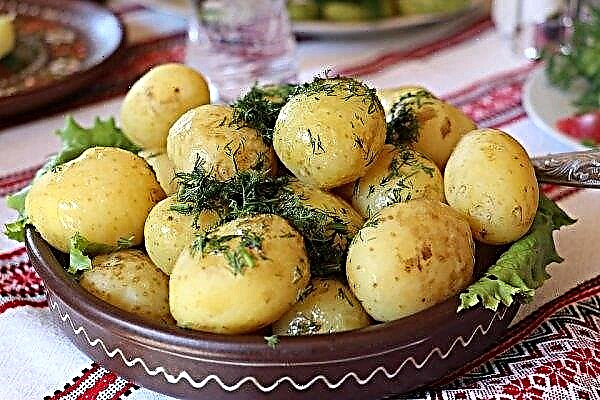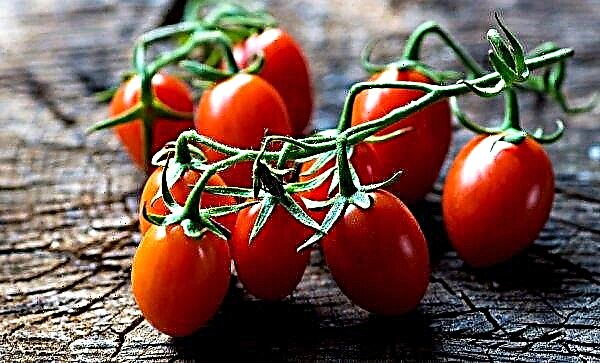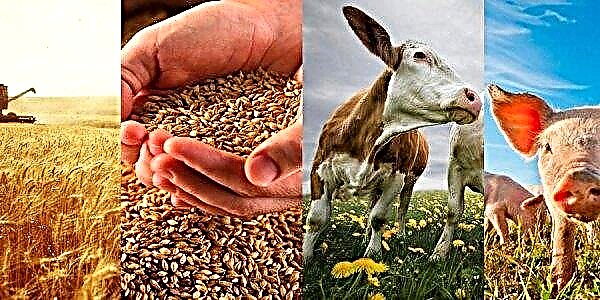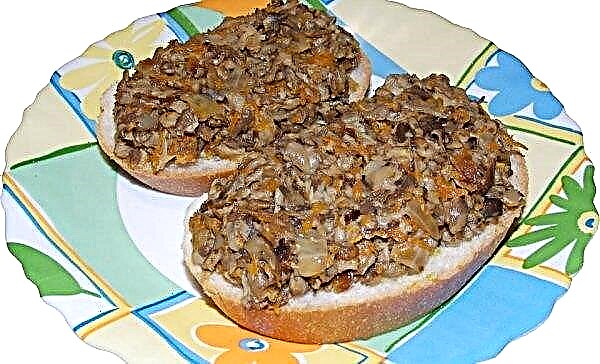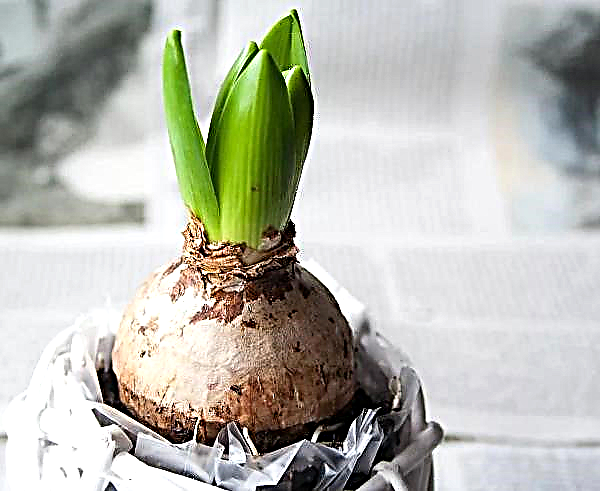Chickens with unusual egg characteristics are not uncommon today in farms, especially birds from China are held in high esteem. One of these breeds is blue-blue-dian - these are hens of usual appearance, but they carry eggs with a green shell. Let's talk about the conditions under which they are bred.
Origin history
Xin Xin Dian were bred in 1993 in Shanghai by the China Poultry Institute. Initially, it was planned to create a fighting breed of chickens on the basis of uheilui, but then the emphasis was on egg laying.
Important! Opinions are found on the Internet that Xin Xian Dyan is not a breed, but a cross (hybrid).
Breed description
The breed of chickens is characterized by appearance, productive qualities, character. We consider each characteristic separately.
Appearance
The appearance of a bird can be described by the following characteristics:
| Appearance | Characteristic |
| Head | Medium in size, face, catkins, beard - scarlet, may be bluish or smoky, eyes yellow-red |
| Crest | Leafy, scarlet, large |
| Beak | Gray with black, medium-sized |
| Neck | Average |
| Chest | Round, well developed |
| Stomach | Powerful |
| Wings | Medium, pressed to the body |
| Tail | Tall, lush, U-shaped, no long braids |
| Paws | Hips and lower legs small, metatarsals gray-yellow, without feathers |
| Plumage and color | Feathers are thick, black, red, red |
The most beautiful representatives are black birds, red and red color of plumage causes an association with outbred birds.
Did you know? Eggs with green shells of these birds are used in folk medicine for the treatment of cardiovascular diseases and hormonal disorders.
Character
Birds have an unfriendly character, if you do not take into account the rivalry between roosters. These chickens are clean, like to move, often fly over the fence, but they do not go far and return to the chicken coop in the evening. Owners of birds note that they are very obedient.
Advantages and disadvantages
The advantages of such chickens include:
- unadulterated character, humility;
- dietary eggs with healing properties;
- original color of an egg shell;
- early puberty;
- high hatchability of eggs and survival of offspring;
- unpretentiousness in the content;
- a small amount of feed consumed.
The disadvantages of breeding these birds:
- low cold resistance;
- a high fence is required so that they do not fly away.
Did you know? Even Aristotle could not find out what happened in the beginning: a chicken or an egg, so he came to the conclusion that they appeared simultaneously.
Home Content
In order to contain blue and blue dian, you need to properly equip the chicken coop, install feeders, drinking bowls, and equip the patio.
Chicken coop
The following requirements are required of the chicken coop for the maintenance of these chickens:
- Size - determined from the calculation of no more than 6 birds per 1 square. m
- The floor is insulated as these chickens are afraid of the cold.
- Temperature - + 12–14 ° С in the chicken coop, + 15–18 ° С - in the cells.
- Perches - are placed at a height of 1 m, with a diameter of 5 cm, 30 cm are left between perches, the length is calculated based on 40 cm per 1 bird.
- Nests are placed in a dark corner, they are covered with sawdust, shavings, fluff, feathers.
- Litter - up to 40 cm thick in winter, thinner in summer. You can use peat, sand, sawdust, shavings.
- Cleanliness - these birds are demanding on cleanliness, need dry clean litter, feeders and drinking bowls should be regularly cleaned and disinfected.
- Ventilation - should be near the floor and ceiling so that the chicken coop does not damp, but without drafts.
- Additional lighting - a lamp of 200 watts per 12 square meters. m, daylight hours - 12-14 hours.
- Tank for swimming with sand - to get rid of fleas.
Walking patio
In order for the chickens to be able to move, they need a patio for walking, on which grass is planted in order to provide birds with green food. Drinkers are installed in the yard. A high fence is built around the courtyard, which they cannot fly over.
Important! When the temperature outside is less than +5 °You cannot walk with blue, blue, dian.
Feeding troughs and drinking bowls
You can use these feeders:
- Tray - with sides that protect against the spread of feed, they are placed for chickens.
- In the form of a gutter with a grill or turntable at the top, divided into sections for different types of food - they are installed on the outer walls of the cells.
- Hopper - in the form of a closed structure, which does not allow to spread the feed. They give the opportunity to add food 1 time per day, suitable for dry food.
- Wooden - for dry food.
- Plastic - for all types of feed.
- Metal - for wet food, easy to clean.
- From twigs or nets - for green feed and hay.
- Floor standing.
- Mounted - mounted on the walls.
 Feeders should be set so large that all chickens can eat at the same time, usually based on the calculation of 10 cm per 1 bird (5 cm per chicken). Height should allow them to eat normally, without scattering food, 13 cm will be enough.
Feeders should be set so large that all chickens can eat at the same time, usually based on the calculation of 10 cm per 1 bird (5 cm per chicken). Height should allow them to eat normally, without scattering food, 13 cm will be enough.Important! Pour into the feed tray no more than 1/3 of the height, then the birds will not scatter it.
Drinking bowls can be used such:
- Nipple with droplet eliminators - by clicking on the nipple, chickens get water.
- Cup - water is supplied as the birds drink it.
- Vacuum - based on the law of communicating vessels.
- Siphon - based on the system for supplying water from the siphon to the tray.
- Bowls, pots, buckets, etc.
- Floor standing.
- Mounted.
Seasonal molt
Every year in the autumn, hens begin to molt. During this period, they cease to rush, their immune system weakens, their ability to resist diseases decreases. During this period, birds need special attention. At the end of molting, egg laying returns to the chickens.
What to feed
In order for the meat and egg characteristics of Xin Xin Dian to meet the requirements, they must be properly fed.
Adult flock
Adult birds are fed with such feeds:
- Grain - wheat, barley, corn, oats.
- Green food - grass, grass meal, hay.
- Vegetables - potatoes, beets, carrots, zucchini.
- Protein feed - fish and meat meal, worms.
- Vitamins - fish oil, yeast, sprouted grain.
- Minerals - salt, chalk, shells, eggshell, bone meal.
Chickens
Features of feeding chickens Xin Xin Dian are as follows:
- Newborns do not need to be fed, they eat the remains of the yolk sac.
- 12 hours after birth, corn grits are fed every 2 hours. Make sure everyone ate.
- A day after that - boiled yolk mixed with semolina.
- In another day or two - barley groats, boiled potatoes, finely chopped green onions and nettle leaves, compound feed for chickens.
- Next, kefir and cottage cheese are additionally introduced.
- At the age of 7 days - mixed feed, wet mash, boiled vegetables, cottage cheese, green food every 3.5 hours.
- At the age of 14 days - additionally introduced bread, fish, bran.
- At the age of 30 days - coarse grain.
- At 45 days - whole grain, gravel, sand, eggshell.
- At 90 days, they feed like adult birds, but give more feed.
 Thus, if you decide to engage in breeding chickens Xin Xin Dian, you can surprise people of unusual color with eggs that have good taste and medicinal properties.
Thus, if you decide to engage in breeding chickens Xin Xin Dian, you can surprise people of unusual color with eggs that have good taste and medicinal properties.Important! Make sure that the chickens are not wet in the drinkers, otherwise they may catch a cold and die.
It is not difficult to create conditions for breeding such birds, but you need to adhere to temperature requirements. And to preserve the healing properties of eggs, do not forget to feed the birds properly.

